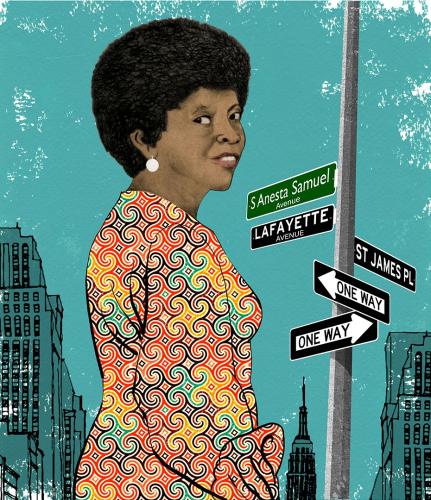
Portrait of S. Anesta Samuel by Rafael López. Smithsonian’s National Museum of the American Latino.
By Erin Blasco of the Smithsonian; Kristen Goodhue of the Smithsonian Environmental Research Center; Magdalena Mieri and Clara de Pablo of the Smithsonian’s National Museum of American History; Emily Niekrasz of Smithsonian Libraries and Archives; Laura Shanahan of Smithsonian Folkways Recordings; and the Digital Initiatives Team at the National Museum of the American Latino
This Hispanic Heritage Month, many Smithsonian museums and research centers shared notable Latinas past and present. Working in a wide variety of fields, these women contributed to many aspects of U.S. culture and areas of knowledge.
1. Pianist and Composer Clotilde Arias
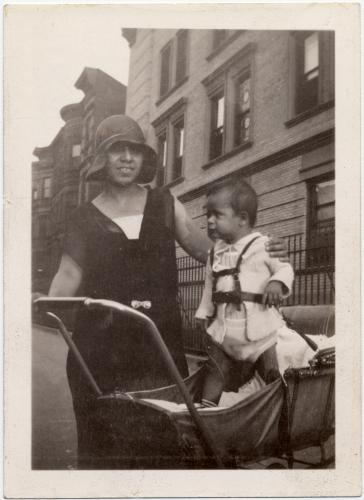
Clotilde Arias with her son, Roger; undated. Photograph. Smithsonian’s National Museum of American History, Archives Center.
Clotilde Arias immigrated from Peru to the United States at 22, hoping to become a concert pianist and composer. She landed a job in the male-dominated world of New York City’s Madison Avenue advertising, where she wrote jingles for products made in the U.S. for an emerging Latin American market.
Arias' talent as a composer was recognized by the U.S. State Department in 1945 when officials commissioned her to write Spanish and Portuguese translations of the National Anthem. This was doubly challenging, as she had to make the translated lyrics singable to the tune of the anthem, based on a British tune popular in the late 18th and early 19th centuries. Arias’ composition of the "Pendón estrellado” is still performed today.
2. Marine Biologist Dr. Brenda María Soler Figueroa
At the Smithsonian Environmental Research Center, Dr. Brenda María Soler Figueroa studies how microscopic creatures like dinoflagellates move around the world in ships. She also learns how tiny organisms can transform ecosystems and the food web.
Brenda offered the following advice for students aspiring to become scientists. She said, "My mother always says, 'Querer es poder.' And that translates to, 'When there is a will, there is a way.’ Know that you are smart and you are capable. It's not about having special abilities but working towards gaining them. If you want it, you can do it."
3. Businesswoman S. Anesta Samuel

Portrait of S. Anesta Samuel by Rafael López. Smithsonian’s National Museum of the American Latino.
Growing up, S. Anesta Samuel witnessed the discrimination and lower wages her father experienced as a Black Caribbean worker on the U.S.-controlled Panama Canal. Her family had moved to the Canal Zone from Montserrat in the West Indies. In the Canal Zone, West Indians faced racial segregation.
As a teenager, Anesta rejected the lack of education and employment opportunities offered by the Canal Zone system and opened her own beauty salon. In 1950, she immigrated to Brooklyn, New York. There, she founded a scholarship organization for Panamanian students, called Las Servidoras (The Servers) and later renamed The Dedicators.
4. Singer Chelo Silva
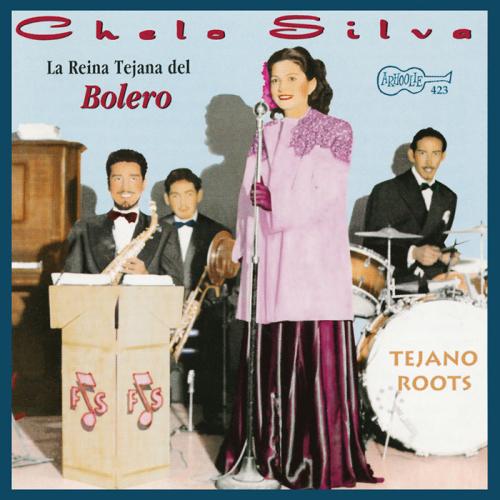
Album cover for Chelo Silva’s La Reina Tejana Del Bolero, 1995, Arhoolie Records. Photographed by Manuel Peña, designed by Beth Weil. Smithsonian Folkways Recordings.
Billed as “La Reina del Bolero” (The Queen of Bolero), Consuelo “Chelo” Silva was an early creator of popular Mexican music. Born in 1922, she began her career in the late 1930s in Brownsville, Texas. Her music gained her fans on both sides of the American-Mexican border.
Released on Arhoolie Records and part of the Smithsonian Folkways collection, the album La Reina Tejana Del Bolero is drawn from recordings Chelo made between 1958 and 1964. It ends with an excerpt from a 1983 live radio broadcast, accompanied by Tex-Mex “Accordion King” Flaco Jiménez and his conjunto (a small musical ensemble).
“[Chelo’s] low, sultry voice, by turns laden with gravelly and dulcet tones, infused each melancholy [tune] with a note of authority,” essayist Leticio Del Toro writes in the album’s liner notes. “Her songs spoke of love affairs gone awry, betrayals, and desires that could not be subdued… The few minutes spent listening to an exquisite bolero could echo a passion that lasted a lifetime.”
5. Zoologist Dr. Isabel Pérez Farfante
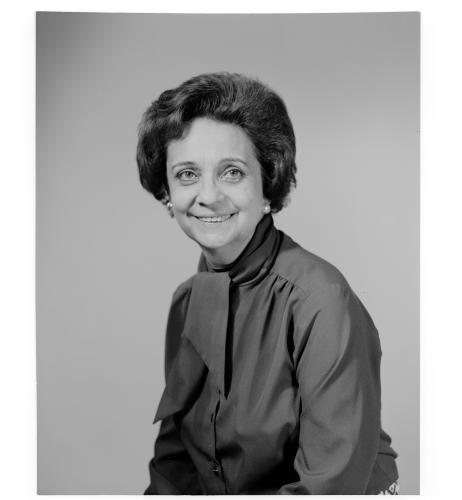
Portrait of Dr. Isabel Perez Farfante at the National Museum of Natural History, 1972. Smithsonian Institution Archives.
Zoologist Dr. Isabel Pérez Farfante’s journey to work at the Smithsonian was far from typical. She was working as a professor and biologist in her homeland of Cuba when she and her husband learned they had been “blacklisted” (noted as unacceptable) by the government. They were blacklisted after her husband declined to accompany Che Guevara on a trip abroad. Fearing for their safety, the family fled to the U.S., where Farfante had already established ties to the scientific community.
In 1966, she joined the National Marine Fisheries Service as a systematic zoologist at its laboratory in the Smithsonian’s National Museum of Natural History. Twenty years later, she took on a research associate role with the museum’s division of crustacea, where she worked until her retirement in 1997. In her research, she specialized in the penaeoid shrimp.
6. Community Builder Casilda Luna
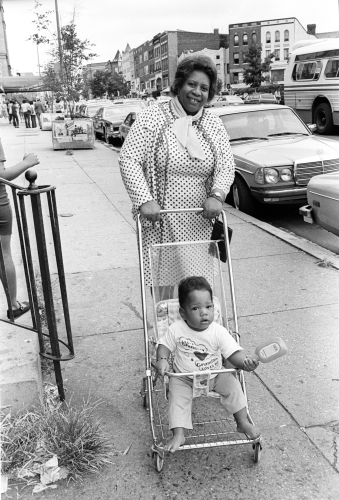
Casilda Luna and her grandson, 1978. Courtesy of the artist, Nancy Shia, for the Smithsonian’s National Museum of the American Latino.
Casilda Luna is a community builder and activist in Washington, D.C.’s Adams Morgan neighborhood. Luna immigrated to the U.S. from the Dominican Republic in 1962. She soon began organizing weekly community gatherings, which grew into discussions about social issues her community faced. Luna rallied her neighbors and the local Latino community around topics such as fair housing and care for senior citizens. In December of 2021, at 97 years old, she won the Oscar de la Renta Dominican Emigrant Award.
Related Posts
Erin Blasco is the social media strategist in the Smithsonian’s central Office of Public Affairs.
Kristen Goodhue is the science writer for the Smithsonian Environmental Research Center. She shares stories about climate change, invasive species, ray tagging, and other coastal science research on the center's online platforms.
Magdalena Mieri is the director of the Program in Latino History and Culture at the National Museum of American History. She works to ensure that the rich and complex stories of Latinx communities are represented in the public history work of the Museum.
Emily Niekrasz is the former website and social media content manager at the Smithsonian Institution Archives. She researched, wrote, and edited blog posts, social media content, and new pages for the website.
Clara de Pablo is a Communications Assistant at the National Museum of American History. Her work focuses on making sure stories about the museum reach the diverse audiences they represent.
Laura Shanahan is the social media coordinator at Smithsonian Folkways. She contributes to marketing campaigns for new releases and researches archival materials to create written and visual social media content that brings the vast catalog’s songs, sounds, and voices to life across various online spaces.